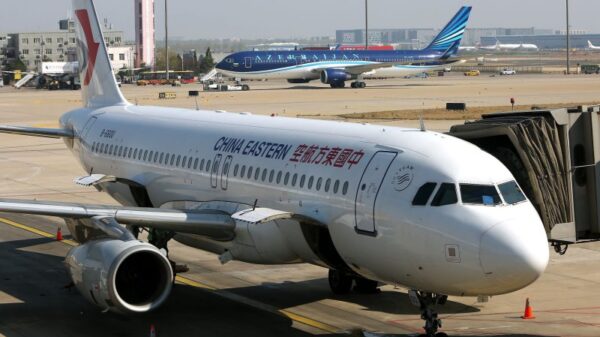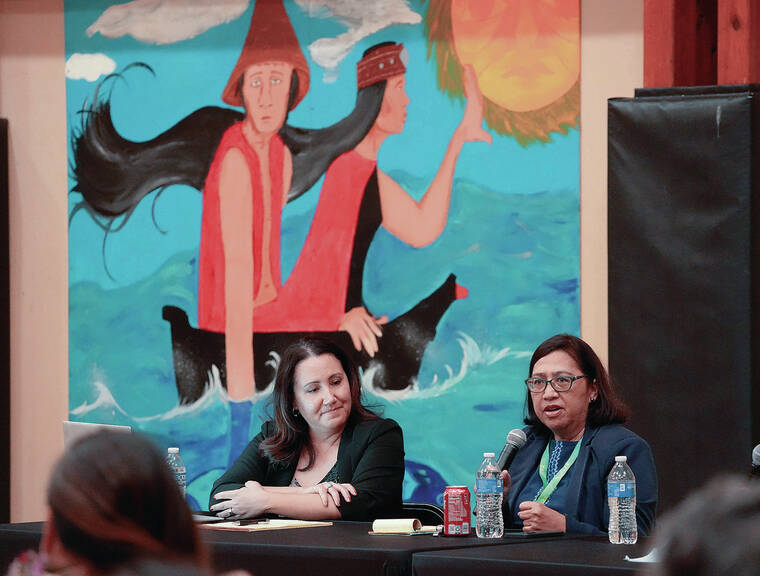The Native Hawaiian Convention held in Tulalip, Washington, has ignited critical discussions surrounding federal recognition for Native Hawaiians. The annual event, organized by the Hawaiian Council, attracted over 1,300 attendees from 37 states and various countries, marking it as the largest gathering of Native Hawaiians.
Among the participants was U‘ilani Moore-Wesley, a Native Hawaiian from California, who benefited from the convention by obtaining a Hawaiian Registry Program card. This card, which she learned about seven years ago but had not previously acquired, is essential for accessing various medical and dental benefits. Moore-Wesley described the convention’s importance as “as important as air,” emphasizing its role in connecting Native Hawaiians with vital resources.
The convention, which runs until Thursday, has become a platform for uniting Native Hawaiians and other Indigenous groups. Discussions have centered on creating pathways toward resilience, particularly in light of recent government cutbacks and shutdowns. Breann Nu‘uhiwa, who participated in a panel on federal recognition, highlighted how uncertainty has spurred renewed interest in establishing a government-to-government relationship between the U.S. and a Native Hawaiian governing body.
The event’s location on the federally recognized tribal lands of the Tulalip Tribes added to the significance of these discussions. Sen. Brian Schatz (D-Hawaii), vice chair of the U.S. Senate Committee on Indian Affairs, noted that while the Native Hawaiian community does not currently hold a formal relationship with the U.S. like federally recognized Indian tribes, the attributes of such a relationship exist. He cited a 2016 reaffirmation by the U.S. government to establish a formal relationship if the Native Hawaiian community chooses to pursue it.
Despite this potential, the path to federal recognition remains complex and divisive within the Native Hawaiian community. During the panel discussions, opinions varied widely; some attendees expressed support for federal recognition, while others voiced skepticism or chose not to respond.
Teri Gobin, chair of the Tulalip Tribes board of directors, drew parallels between the challenges faced by Native Hawaiians and those experienced by Indigenous tribes in Washington. She emphasized the importance of unity in addressing these issues.
The Hawaiian Council’s CEO Kuhio Lewis stressed the need for organic discussions around political recognition. He believes that focusing on economic sovereignty is vital for the community’s overall well-being, arguing that the pursuit of economic stability is a prerequisite for political action. Lewis anticipates that conversations about federal recognition will progress, though he cautioned that this may take at least another two years given the current political climate.
Senator Schatz also pointed to financial implications tied to federal recognition. He mentioned that a potential grant freeze could jeopardize $47 million in federal funding for the Native Hawaiian community, an issue that has prompted efforts to safeguard these resources.
Panelist Esther Kia‘aina supported Lewis’s perspective on economic sovereignty but argued that pursuing federal recognition could provide essential funding for various programs, including education initiatives. She referenced the significant financial resources that could be redirected to a governing entity, highlighting the potential benefits of federal recognition.
The discussion about federal recognition is further complicated by historical context. Some community members are wary of relying on the U.S. government for sovereignty, citing past failures and broken promises. Makaio Villanueva articulated a sentiment of caution, stating, “Another school of thought is that the slave owner will never give the keys to the slave.”
Conversely, Brandon Maka‘awa‘awa, vice president of the Nation of Hawai‘i, expressed skepticism about federal recognition, viewing it as insufficient for meaningful change. He emphasized the Nation’s commitment to establishing independent relationships with various Native American tribes, thereby fostering a coalition of Indigenous nations to share resources and cultural practices.
As the Native Hawaiian Convention progresses, the dialogue surrounding federal recognition continues to evolve. With diverse opinions and a shared commitment to strengthening the community, the discussions at this year’s event are expected to shape the future of Native Hawaiian political aspirations and resource access.





































































